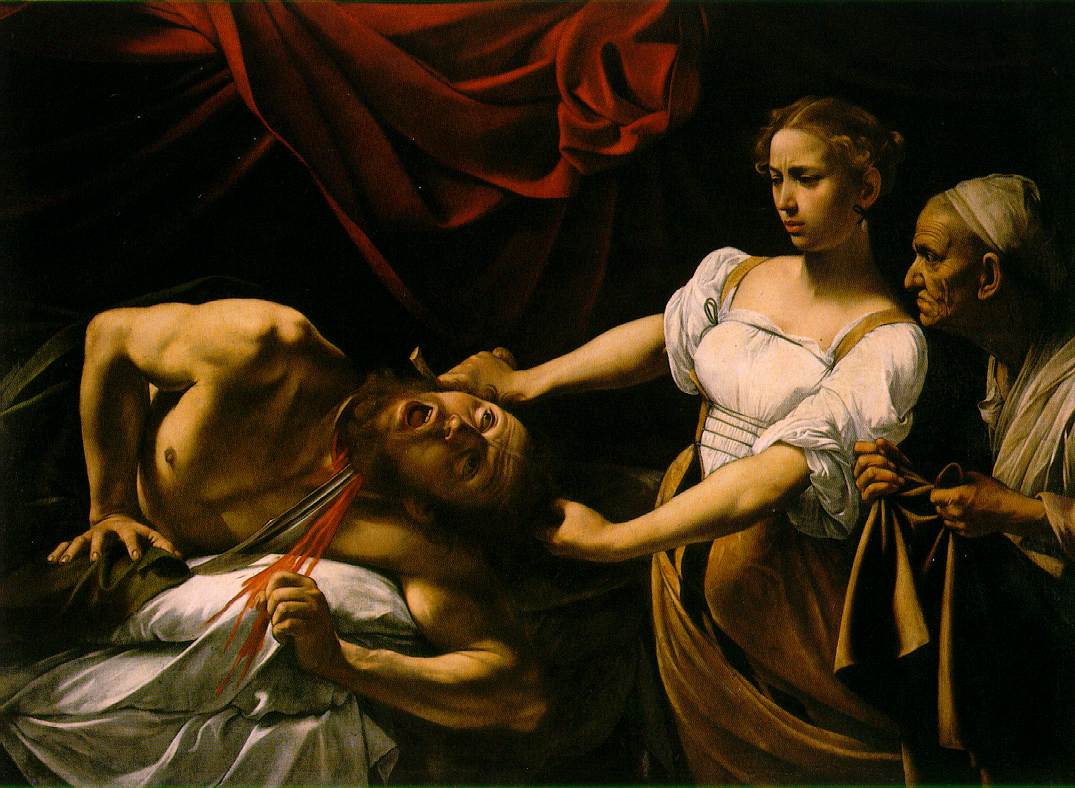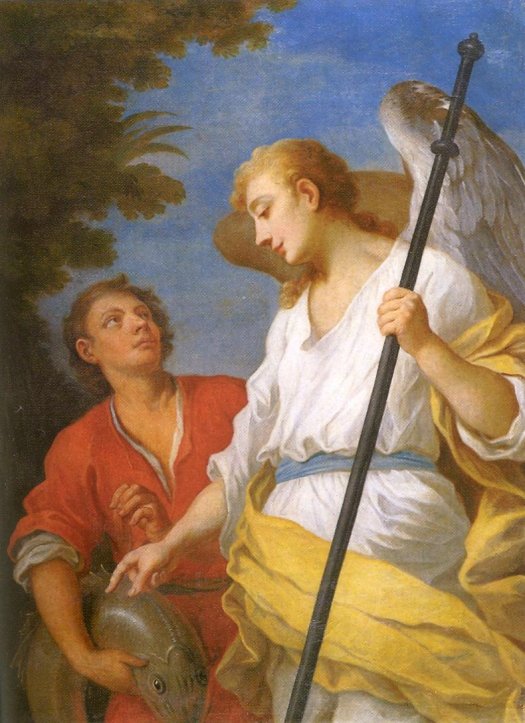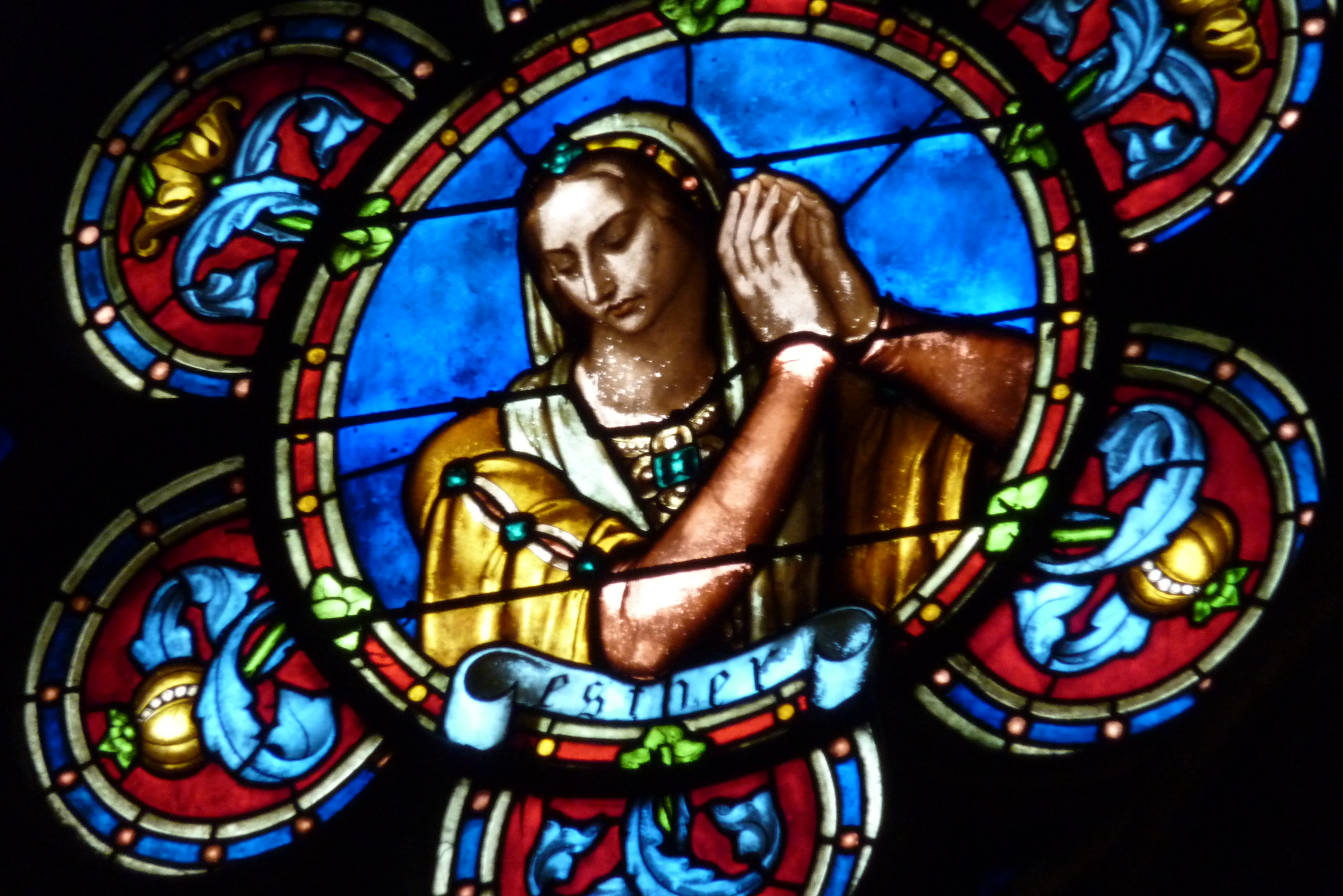Much has been said, here and elsewhere, on why Catholics have 73 Books in our Bibles, instead of the mere 66 that our Protestant brethren have, or why we have longer versions of Daniel and Esther than Protestants. The Books in question, the Deuterocanon, are often defended as a group, as I did against arguments raised by Mars Hill pastor Mark Driscoll.
Sometimes, however, you’ll get a really specific question about why we know a specific Deuterocanonical Book is inspired by the Holy Spirit. So in case that’s what you need, I’ve assembled a general overview, by Book, explaining why each Book deserves to be in the canon of Scripture. Today is Part I, in which we’ll examine the Book of Tobit, the Book of Judith, the longer version of Esther, and the Book of Wisdom. In Part II, we’ll address the other Books (namely, Sirach, Baruch, 1st and 2nd Maccabees, and the longer version of Daniel).
The Book is Prophetic: In the Book of Tobit, the Archangel Raphael appears to Tobit disguised as a man. When he reveals his true identity, he identifies himself in this way (Tobit 12:15):
Szymon Czechowicz, Tobias and the Angel (1740s) I am Raphael, one of the seven angels who enter and serve before the Glory of the Lord.
In this capacity, he explains (Tobit 12:12),
I can now tell you that when you, Tobit, and Sarah prayed, it was I who presented and read the record of your prayer before the Glory of the Lord; and I did the same thing when you used to bury the dead.
Then I saw the seven angels who stand before God, and seven trumpets were given to them. And another angel came and stood at the altar with a golden censer; and he was given much incense to mingle with the prayers of all the saints upon the golden altar before the throne; and the smoke of the incense rose with the prayers of the saints from the hand of the angel before God.
How could the author of Tobit possibly know such intimate details of the Inner Sanctum of Heaven if this were not part of Divine Revelation?
The Book was Accepted by the Early Church: Origen mentioned, in the middle part of the third century, that unlike the Jews, “the Churches use Tobias” as Scripture. His opponent, Africanus, likewise says that Tobit “prophesied” about the Babylonian Captivity.
Even before this, St. Clement of Alexandria, in his Stromata, argues against the Gnostics that it’s the Christians who are the true gnostics (that is, the true learned). At one point, he says:
Therefore the Gnostic prays in thought during every hour, being by love allied to God. And first he will ask forgiveness of sins; and after, that he may sin no more; and further, the power of well-doing and of comprehending the whole creation and administration by the Lord, that, becoming pure in heart through the knowledge, which is by the Son of God, he may be initiated into the beatific vision face to face, having heard the Scripture which says, “Fasting with prayer is a good thing.”
That passage he’s calling Scripture is Tobit 12:8. And the Stromata was written between 198 and 203 A.D. In addition, copies of the Book of Tobit were found in both Hebrew and Aramaic among the Dead Sea Scrolls, suggesting that at least some of the Jews around the time of Christ considered it canonical.
The Book is Prophetic: Judith (whose name, meaning “Jewess,” is the female form of “Judah”) appears to be a symbol of Israel and the Church, and prefigures Mary in a number of ways. Genesis 3:15 promises that the Serpent (the devil) would be an enmity with the Woman (representing Mary and the Church) and the Seed of the Woman (representing Christ), a battle we also see playing out in Revelation 12. The Book of Judith continues this theme, pitting Judith against the Babylonians, Assyrians, Medeans, and Chaldeans.
The Marian parallels to Judith are numerous. In Judith 6:19, Judith says, “Lord, God of heaven, behold their arrogance! Have pity on the lowliness of our people, and look with favor this day on those who are consecrated to you.” This is fulfilled in the Magnificat, in which Mary, consecrated to the Lord, declares that (Luke 1:51-52), “He has shown strength with his arm, he has scattered the proud in the imagination of their hearts, He has put down the mighty from their thrones, and exalted those of low degree.” Likewise, Judith says (in Judith 8:32), “Listen to me. I am about to do something that will go down through all generations of our descendants,” just as Mary promised in Luke 1:48 that “behold, henceforth all generations will call me blessed.” And Judith 15:9, “You are the glory of Jerusalem, the surpassing joy of Israel; you are the splendid boast of our people,” is used in the Liturgy to describe Mary.
 |
| Caravaggio, Judith Beheading Holofernes (1599) |
The Book was Accepted by the Early Church: The passage referenced above, in which Origen talks about how the Christians accepted the canonicity of Tobit (despite Jewish rejection), analogizes it to the situation of the Book of Judith. The implication is that Judith, like Tobit, is accepted by the Christians, despite being rejected by the Jews.
St. Clement of Alexandria, likewise, refers to Judith as a model of virtuous womanhood, and as a demonstration of how women are called to be Saints along with men. After describing the great deeds of Moses in Scripture (and right before describing the great deeds of Esther), Clement writes:
But Judith too, who became perfect among women, in the siege of the city, at the entreaty of the elders went forth into the strangers’ camp, despising all danger for her country’s sake, giving herself into the enemy’s hand in faith in God; and straightway she obtained the reward of her faith,—though a woman, prevailing over the enemy of her faith, and gaining possession of the head of Holofernes.
Clement is, without a doubt, treating the Book of Judith as Scriptural here. And this also comes from the Stromata, written no later than about 203.
As early as this is, we can actually go back more than a century earlier to find Pope Clement making the same point, and using the same two Books (Judith and Esther):
Many women also, being strengthened by the grace of God, have performed numerous manly exploits. The blessed Judith, when her city was besieged, asked of the elders permission to go forth into the camp of the strangers; and, exposing herself to danger, she went out for the love which she bare to her country and people then besieged; and the Lord delivered Holofernes into the hands of a woman.
Esther also, being perfect in faith, exposed herself to no less danger, in order to deliver the twelve tribes of Israel from impending destruction. For with fasting and humiliation she entreated the everlasting God, who seeth all things; and He, perceiving the humility of her spirit, delivered the people for whose sake she had encountered peril.
The Book is Holy: God is mentioned by name dozens of times in the Catholic version of the Book of Esther. In the Protestant version of the Book of Esther, He’s not mentioned at all. Given that, perhaps a better question is: why include the Protestant version of Esther in the Bible?
The Book was Accepted by the Early Church: Those Church Fathers who accepted Esther’s canonicity seemed to have overwhelmingly preferred the longer Greek (Catholic) version. For example, in his writings against the Pelagians, St. Augustine argued:
Esther, stained glassed window, Saint Germain (Paris) And what is that which Esther the queen prays when she says, “Give me eloquent speech in my mouth, and enlighten my words in the sight of the lion, and turn his heart to hatred of him that fighteth against us”? [Esther 14:13] How does she say such things as these in her prayer to God, if God does not work His will in men’s hearts? But perchance the woman was foolish in praying thus. Let us see, then, whether the desire of the petitioner was vainly sent on in advance, and whether the result did not follow as of one who heard.
Lo, she goes in to the king. We need not say much. And because she did not approach him in her own order, under the compulsion of her great necessity, “he looked upon her,” as it is written, “like a bull in the impulse of his indignation. And the queen feared, and her colour was changed through faintness, and she bowed herself upon the head of her maid, who went before her. And God changed him, and converted his indignation into mildness.” [Esther 15:5] Now what need is there to relate what follows, where the divine Scripture testifies that God fulfilled what she had asked for by working in the heart of the king nothing other than the will by which he commanded, and it was done as the queen had asked of him?
The Book is Prophetic: One of the clearest Christological prophesies comes from Wisdom 2, about how the unjust will put to death the Just One for claiming to be the Son of God. Despite being written long before the time of Christ, the passage tracks neatly with the account of the Passion recorded in St. Matthew’s Gospel. I’ve explained this before, so I won’t belabor it here.
The Book was Accepted by the Early Church: The Early Church Fathers noticed how Christological this Book was (particularly the passage I just mentioned), and applied to it Christ. For example, the Epistle of Barnabas, probably written between 70-131 A.D., says:
For the prophet speaks against Israel, “Woe to their soul, because they have counselled an evil counsel against themselves, saying, Let us bind the just one, because he is displeasing to us.”
As Philip Schaff notes, this quotation blends Isaiah 3:9 and Wisdom 2:12. Schaff, who rejects the canonicity of the Book of Wisdom, admits (in fn. 1504): “This apocryphal book is thus quoted as Scripture, and intertwined with it.” That’s good evidence that Wisdom is not, in fact, “apocryphal.” This is confirmed by numerous other occasions on which the Church Fathers quote Wisdom as Scripture, as St. Clement of Alexandria does in the Stromata (quoting Wisdom 2:16, 6:12-15, and 6:17-20).



Thank you so much for this. It gives much needed context to those of us who haven’t had much exposure to the deuterocanonical books!
I love this. Keep up the great work, brother.
thanks Joe for your writing. I enjoy the artwork you so proudly place into your discussions. I will keep you in my prayers while you study for the priesthood.
As one whose primary focus has been the New Testament (More than is probably healthy in the opinion of some…), this bit about the Old Testament was very interesting. Good job.
I’ve been studying Wisdom and Sirach for the first time and it’s been such an eye-opening journey. Your great post makes me want to dig in to the other deuterocanonicals.
Mr. Heschmeyer,
Thank you, for that great tidbit about the Book of Tobit. (A book I’m not that familiar with, I’m sorry to say.)
I would say that your argument is proof positive that Tobit is the Inspired Word of God. Thus, proving that the LXX is the true Canon of Scripture. I can’t wait to pass on this great piece of Truth to the next non-Catholic I come across, hopefully planting a seed that the Holy Spirit can use to great effect.
God Bless!
First of all, I want to praise your detailed research and explanation. However, I would like to add this note. If someone wants to defend the Catholic Bible from Luther’s deletions, the simplest way to explain it to an ordinary person is just to state that Catholics use the Bible that Pope Damasus asked St. Jerome to revise and translate, starting in 382 when Christians were united in one Church; it was never rejected at any council of the then united Church and has remained till today
Great idea for a post.
I’d like to add that in regards to Tobit, St Polycarp in the very early 100s quoted it as Scripture in his Epistle: “When you can do good, defer it not, because “alms delivers from death.” [Tobit 4:10, Tobit 12:9]”
So that’s another nugget.
Great post, thanks for writing this. As a Protestant, I’m very intrigued in this matter, and appreciate your contribution to the subject.
FYI, check out this resource from Logos: Classic Commentaries and Studies on the Deuterocanon (46 vols.)
http://www.logos.com/product/23959/classic-commentaries-and-studies-on-the-biblical-apocrypha-deuterocanon
Thanks, Jon! And thanks for sharing that Logos link. If you’ve got any questions regarding the Deuterocanon, please don’t hesitate to ask! God bless,
Joe
Have you noted that the Jerusalem Bible does not contain the longer version of Esther? Do you know why is this? [www.catholic.org/bible/] Greetings from Mexico, excelent site!
I’m not Protestant but how do you answer the claims of James White which Catholic apologists failed to answer in debates when White pointed out that the later Catholic dogmas concerning the infallibility of the Pope and indulgences and the Marian dogmas and purgatory and the 7 sacraments are not known or taught by the church father’s in the first 4 centuries. ? Nor are they found in the NT. So how are they biblical apostolic or Christian. ? They can’t be apostolic tradition if they weren’t taught by the apostles. And RC can’t prove that the apostles did teach the above mentioned dogmas. God has given us a revelation of truth in Scripture that we must accept. But we don’t have to accept man-made tradition that is unproveable.
You raised up many questions. It is impossible to answer them all in one post, but you can find answers on site catholic.com